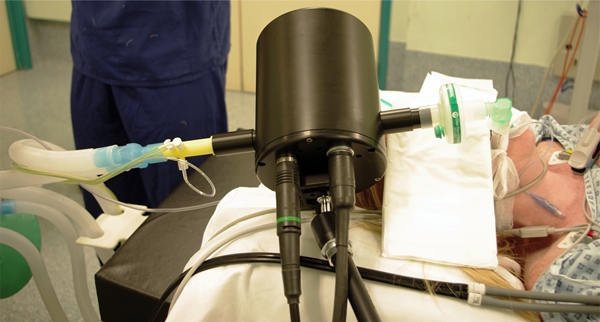11 August 2016. Researchers at University of Oxford in the U.K. designed a device that measures oxygen consumption in critically ill patients, to prevent occurrence of shock. The team led by physiology professor Peter Robbins describes its system in yesterday’s issue of the journal Science Advances.
Shock is a dangerous life-threatening medical condition that occurs when insufficient oxygen circulates in the body, causing vital organs and functions to shut down. It can happen when blood pressure declines to such a degree, from reduced cardiac output or blood volume, that oxygen fails to get delivered to cells and tissue. Shock can result from a number of causes, including heart disease, trauma, and bacterial infections that spread to the blood.
Devices now used with patients to measure oxygen levels, say the authors, are invasive, inaccurate, and offer intermittent rather than continuous readings. And attempts up to now to provide non-invasive measures of oxygen levels have not succeeded. The Oxford team decided to try an indirect approach in their design of a non-invasive device to measure oxygen consumption in patients receiving intensive care.
In their solution, Robbins and colleagues measure oxygen in the breath, adapting a form of spectroscopy that measures the interactions between molecules and light rays, which reveals characteristic signals identifying those molecules. In this case, the researchers adapted a form of laser spectroscopy, where absorption of laser beams directed at the exhaled breath of patients could identify oxygen, as well as carbon dioxide and water vapor. A feasibility test of the technology in the lab a few years ago showed the technology could work.
The clinical device, called a molecular flow sensor, fits directly over the individual’s mouth and measures oxygen, carbon dioxide, and water vapor exchanged ever 10 milliseconds. In tests with a healthy volunteer, the researchers alternated between the person breathing ambient air and pure oxygen for 40 minutes total, with the results showing the molecular flow sensor could indicate the period when pure oxygen was supplied.
The researchers then tested the device with a patient under anesthesia in intensive care following repair of an abdominal aortic aneurysm. The system was able to track changes in the patient’s oxygen level resulting from applying an aortic clamp and giving medication affecting blood flow and oxygen output from the lungs.
The technology still needs refinement and streamlining from its current bulky and heavy (1.9 kilogram, 4.2 pound) design before it can be considered practical for clinical use. Nonetheless, the university already patented some of the technology and filed patent applications for others. In addition, spin-off enterprise Oxford Medical Diagnostics is licensing breath analysis technologies for development of devices providing accurate and low-cost monitoring of diseases and metabolic functions.
Read more:
- NIH Funding Trial of Precise Tumor Removal System
- Virtual Reality Added to Microscope in Brain Surgery
- Trial to Assess Anti-Gravity Treadmill for Stress Test
- Microneedle System Designed for Drug Monitoring
- Device Measuring Nerves on Heart Rhythm in Development
* * *


 RSS - Posts
RSS - Posts
You must be logged in to post a comment.